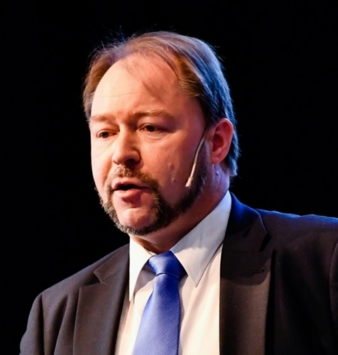06/05/2019 – Training in textiles — auf Deutsch lesen
Missed opportunities for the future
The realities of industry training are galloping past old-fashioned teaching content. Does Germany have a long and stable future as a global player in technical textiles?
The futurist Thomas Strobel* warns about missed opportunities for the future in view of the lagging behind realitiy referring skilled workers training.
E-textiles, textile composite materials for lightweight construction, implants made on braiding machines, industrial digitalisation 4.0… the internationally booming world of technical textiles has become interdisciplinary, cross-sector, highly technological and hugely complex.
26 textile training professions
It appears, however, that the 26 textiles apprenticeships listed on the German planet-beruf.de portal, for example, are teaching very little about these often breathtaking developments. Textile-related occupations are, in name at least, still the same as they were 30 to 40 years ago: alteration tailor, seamstress, automotive interior designer, product designer, interior decorator, rope maker, textiles and fashion tailor, dry-cleaner…
Does Germany have a long and stable future as a global player in technical textiles?
Casting his view to the apprenticeships on offer, which he believes are failing to reflect the realities of the industry, Munich-based futurist Thomas Strobel has issued a warning against missed opportunities.
According to the German Federal Institute for Vocational Education and Training, a good 531,000 apprenticeship contracts were signed in 320 occupations in 2018. More than 75 percent of apprentices began their careers in the top 50 sectors, among them office, retail and services. The first purely textiles-based occupation – as a bespoke tailor – ranks 154th with 270 new contracts.
Unless they happen upon one of the major textile research institutes or the new Textile Academy NRW in Mönchengladbach – all of which are industry-related institutions that focus on the exciting future of textiles – young apprentices with a passion for textiles may ultimately find themselves in an antiquated sector with no prospects. Apprentices – not only in textiles – continue to be trained in occupations that may not be around for very much longer or that are likely to undergo fundamental change. In addition, the emerging lack of skilled labour is likely to be at its most acute in those occupations that are yet to be created. Possible examples are: textile electronics technician, textile sensor technician, or textile actuator technician.
Unanswered questions
It has taken more than 20 years since the launch of eBay and Amazon to finally come up with a corresponding apprenticeship in e-commerce management. Futurist Thomas Strobel believes that the textiles sector must ask itself the following questions as a matter of urgency:
• On the basis of which forward-looking plan should the content of today’s apprenticeships be checked for practicability and how should they be adapted to make them future-proof?
• How can the all-important basic skills be identified and then taught to ensure that apprenticeships lead into jobs with good prospects, whilst providing lasting knowledge and lifelong learning?
• How can tomorrow’s occupations and job descriptions be anticipated so that corresponding apprenticeships can be planned for the competencies required?
• How can suitable concepts for apprenticeships and occupations be created that link in with the most future-orientated forms of learning and assistance, e.g. workplace, tablet, smartphone, e-learning, virtual reality, augmented reality, situational provision of information etc.?
* Thomas Strobel has close connections with the textiles industry: On behalf of German textiles research board Forschungskuratorium Textil, he moderated a “journey in time” with interdisciplinary teams working in textiles research and industry as part of the “Perspektiven 2025” project, resulting in a total of 250 future textile products and new business models.




